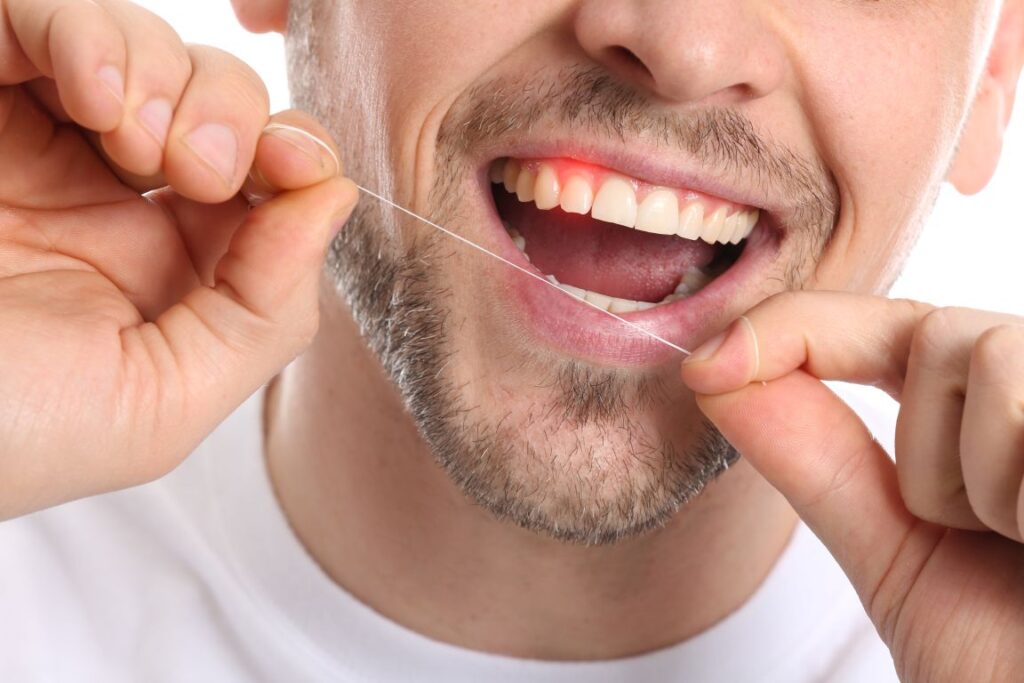Can Your Dentist Cure Gum Disease?
February 13, 2025

If you’ve been diagnosed with gum disease, it’s normal to be a little concerned. After all, this progressive infection can cause some serious damage if not treated promptly. But the good news is that in its early stages, gum disease is completely reversible, and it can still be well-managed if proper care is provided at later stages.
Here’s a closer look at the symptoms of gum disease, and what could happen if you don’t treat this condition in time.
What is Gum Disease?
Gum disease is a progressive infection of the gums caused by a variety of factors, including poor oral hygiene, smoking, and other systemic illnesses. With regular brushing, flossing, and dental cleanings, it is completely preventable, however if you have it, it should not be ignored. Failing to treat this condition can cause your gums to recede and could eventually lead to tooth and bone loss that will rob you of your smile.
How Can I Tell if I Have Gum Disease?
According to the Centers for Disease Control, nearly half of all US adults have some form of gum disease. This condition starts its life as gingivitis, which typically causes things like mild inflammation and bleeding gums when you brush and floss. Usually all you need to do to reverse gingivitis is brush and floss more frequently and it will clear up on its own, but if left untreated, it can turn into periodontal disease, which is much harder and more expensive to treat. Signs of gum disease include:
- Bleeding gums
- Pain while chewing
- Bite changes
- Receding gums
- Loose teeth and/or tooth loss
- Red, swollen gums
- Bad breath
Periodontal disease can also cause jawbone deterioration which can also cause you to lose your teeth, so be sure to take it very seriously.
How is Gum Disease Treated?
How your dentist treats gum disease depends on the individual symptoms you may be experiencing. Most patients benefit from a scaling and root planing procedure, which removes dangerous plaque from below and above the gumline and then smooths down the roots of the tooth so your gums can reattach to them and heal properly.
Some patients may also benefit from antibiotic therapy, which will help fight off any bacteria that were not during the root scaling and planing treatment.
Another popular option is laser periodontal treatment. This procedure uses lasers to remove damaged gum tissue and encourage regrowth of healthy tissue. Because laser technology is used, it is much more comfortable than a traditional gum graft and boasts a faster healing time and lower risk of complications such as reinfection.
Finally, the Chao Pinhole Technique is another treatment your dentist may use to repair receding gums. A small incision is made in your gum tissue to loosen it and stretch it back over any exposed tooth roots, acting in place of a traditional graft.
Remember, gum disease is a progressive condition, meaning that while it does start out slowly and easily treatable, it can easily worsen if not treated promptly. If you notice any of the above signs and symptoms, don’t wait until it’s too late to receive care. Schedule an urgent appointment with your dentist today and stop gum disease from destroying your beautiful smile!
About Dr. Gaitsgory
Dr. Marianna Gaitsgory earned her Doctor of Dental Medicine (DMD) at the Goldman School of Dental Medicine at Boston University and has been passionate about continuing education ever since. Dr. Gaitsgory is a big proponent of preventive care, and the connection between how oral health affects your overall health.
If you are experiencing any of the signs of gum disease, don’t put your teeth, gums, and jawbones at risk. Schedule an urgent appointment with Framingham Premier Dental today by visiting our website or calling us at 508-875-0900.
No Comments
No comments yet.
RSS feed for comments on this post.
Sorry, the comment form is closed at this time.


